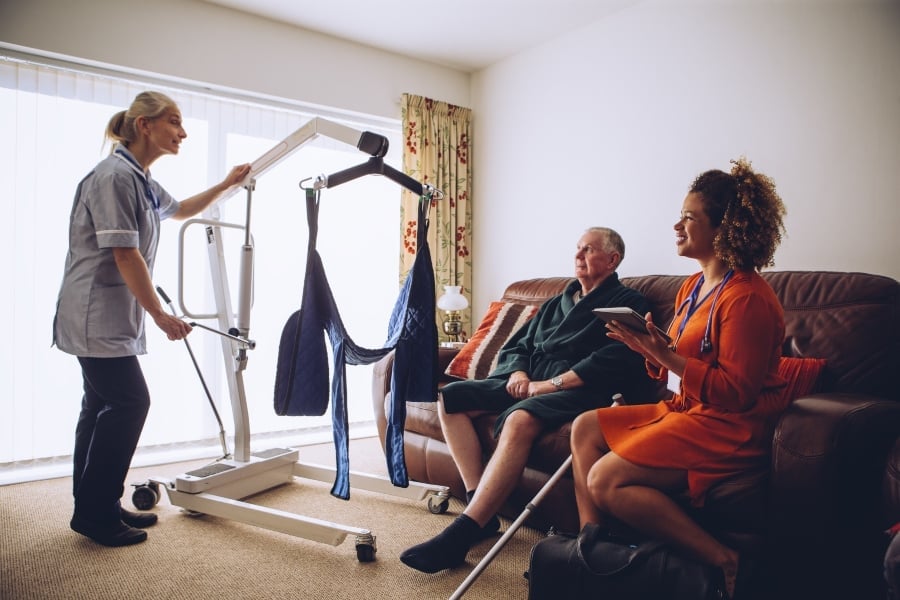Measuring the value of attaining accurate sizing for patient slings
The MHRA published a safety warning entitled “Size Mattersâ€, which highlights the importance of assessing the sling size correctly due to the number of incidents that have occurred when slings hadn't been the correct size.
So why is it so important to get sling sizing right and yet so easy to get it wrong?
The use of hoists and slings is an integral part of delivering health and social care services. Although this can reduce musculoskeletal risks, there are other risks associated with hoisting people. Each year a significant number of incidents are reported in which people have been injured while being moved using hoisting equipment. An average of 120 incidents per year are reported to the Medicines and Healthcare products Regulatory Agency (MHRA).
The degree of injury varies, depending on the vulnerability of the hoisted person, the nature and consequences of the fall and what the falling person makes contact with. Falls during hoisting have resulted in severe injuries, from broken bones through to fatalities.
It is very important to use the correct sized sling and ensure it is properly fitted before attempting to lift. This will ensure the person being lifted feels safe, dignified and comfortable. It will also provide a carer with confidence that they can achieve the transfer required and that the procedure will be executed in an effective and safe manner
There is a risk of using an inappropriately sized sling if you make assumptions without checking the suitability of a specific sling for an individual
The consequences of selecting of the wrong sling size can include discomfort for the individual if the sling is too small leading to potential skin damage and a risk of the person slipping through the sling if it is too large and suffering personal injury which could include bruising, bone fracture, hospitalisation or death.
Slings, like shoes, support your weight. Logic follows (and practice proves) that just like shoes, a good fit is important for comfort.
Manufacturers Sizing
One of the key challenges for care staff when assessing and selecting appropriate slings is that sizing and colour coding can vary tremendously between manufacturers. Most manufacturers use small, medium, large, extra-large, etc to gauge their sizes. However, they all have their own interpretations of what small and large are. For example, two ‘large’ slings manufactured by separate companies may have completely contrasting dimensions – the body of the slings may be a different length. This can be very confusing and mistakes can easily be made.
Solution:
Measuring accurately to achieve a comfortable and correct sling fit is possible by following these three basic components:
Using a tape measure that is not stretched or fabric you can follow the assessment below.
Patient height
Patient waist (girth)size (when applying the sling on the patient)
Patient thighs size (when applying the sling on the patient)
In most cases only the height needs to be measured. For some patients also the waist and thighs might need to be measured. Other factors including the individual’s physical disabilities, weight distribution and general physique need to be taken into consideration.
Height Measurement
The patient can either be in a seated or laying position whilst taking a height measurement. The more accurate measurements are taking from specific points. If you measure nape of neck to coccyx, knee to hip, etc, etc, you will accumulate inaccuracies and almost always result in a person measuring taller than they really are, potentially leading to a sling that is too big for them. For optimum accuracy when dealing with height, measure a person whilst they are lying flat on a bed.
Waist (Girth)size
Measure right around the hips on women or right around the chest just under the arms on men and children. Look at the manufacturers size table and you will see which size that should give the best fit.
Thighs size
After properly fitting the waist, place the leg pieces around the sides of the hips and legs, then under the thighs and up between the legs. If the sling has been applied correctly, the patient’s thighs should only be in contact with the padded portion of the leg pieces.
Weight Capacity
Clearly stated on the manufacturers label of each sling is the safe working load. Some slings vary so always check the label before use and remember to check the safe working load of the hoist prior to lifting a patient as it may differ to that of the sling.
You can request a copy of our free Complete Sling Measuring Guide by emailing us today at sales@hcsuk.co.uk
Loop configuration
Sling designs will alter over time, so a new sling from a manufacturer may differ in size or attachment strap length from one previously purchased. Some slings come with a range of different length loops for attachment to the hoist. These can be used to increase the comfort of the individual or put them in a more reclined or upright position.
However, you should take great care to choose the correct loops for the individual, as per their care plan, to ensure they are not at risk of slipping from the sling, and to use the same loop configuration on both sides to reduce the risk of the person falling from the sling sideways.

Sling safety checks
After the correct size and type of sling has been attained and before it can be used, a check making sure it is fit for purpose will then need to be done.
1) Check the sling and hoist are compatible
2) all labels are legible and show the SWL and unique identifier and size.
3) Make sure there are no signs of fraying, tears or deterioration etc.
4) Check all stitching is present and intact and the Velcro (if applicable) is clean and free of fibres/fluff etc and the buckle (if applicable) has no signs of damage etc.
5) Finally check the loops/clips have no obvious signs of damage, fraying etc; and it has been cleaned.
6) Ensure there are adequate systems in place for maintenance and inspection of hoists and slings in line with the manufacturer’s instructions, the Provision and Use of Work Equipment Regulations 1998 (PUWER) and LOLER. The MHRA device bulletin on managing medical devices, DB2006(05), gives some guidance on this topic.
Hcsuk have a dedicated and knowledgeable team who will be more than happy to answer any questions or queries you have relating to hoist maintenance and service, including LOLER. Testing. We can also assist with the risk assessment and measurements for slings and the proper usage of different slings.
Grab your free sling measuring guide by emailing sales@hcsuk.co.uk and subscribe to our weekly new bulletin designed to add value to every care organisation.
Other Hcsuk Articles you might find interesting...
How Hcsuk Servicing is helping to keep care homes safe and compliant with LOLER testing
The HSE has issued new guidance for care providers on LOLER testing during the Coronavirus pandemic (COVID-19) due to challenges faced by industry
How are care homes coping without access to care professionals to help with essential care equipment assessments during lockdown?
Hcsuk are pleased to be able to add to our already extensive range of products and services to care homes, by offering you a remote equipment assessment service


